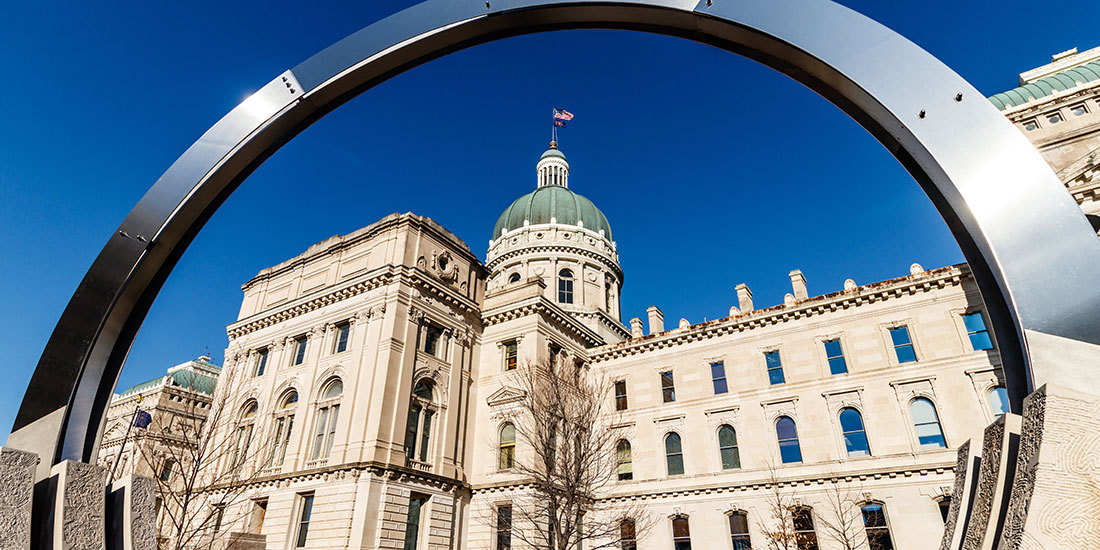Close-out not a blow-out; better than expected, but taps ’26 taxes
This was a fiscal year close-out that – a few months ago – many had feared. After the mid-April fiscal outlook had portended gloom for state coffers as of June 30 (and doom as of June 30, 2027), Fiscal Year 2025 ended with a whimper and not a scream.
As we had moved closer to the end of the fiscal year, revenue collections seemed to lead the forecast, and that phenomenon, combined with a biennium-wide five percent appropriation reduction going forward (current year agency reversions total $183,122,680.47) and changes in the timing of collections for the Pass Through Entity Tax (PTET) means that the State ends the fiscal year $172 million above forecast and with roughly $2.5 billion in state reserves.
This is a slightly higher surplus than originally projected in April. “It was a bleak day, if you recall,” reminds Secretary of the Office of Management and Budget Lisa Hershman. “We were … hoping for a $14 million surplus. I’m proud to say, we far exceeded that” with a $337 million surplus.
The year-end fiscal report confirms Indiana’s reserve breakdown as follows:
· $676 million General Fund
· $41 million Medicaid Contingency & Reserve
· $706 million Tuition Reserve
· $1.1 billion Rainy Day Fund
The reserve amounts to 11.04% of expenditures (vs. 11.64% one year earlier, and 13.64% at the close of the previous budget biennium in 2023). This is the low end of what budget drafters prefer to maintain as the surplus, and works out to about 40 days of keeping the state budget faucet turned on. The most recent high balance as a percentage of operating expenditures, 28.56%, was generated in June 2022. Only once since the end of FY 2011 has the balance ended in the single digits, 9.07% in June 2020, in the midst of the Covid shutdown.
“Hoosiers can rest assured that Indiana continues to be in a solid financial position,” asserts State Comptroller Elise Nieshalla (R).
However, some $160 million of the surplus is attributable to the PTET shift . . . money that won’t now be available to help meet obligations in FY 2026. Not including those collection changes, Indiana finishes within $10 million of the forecast.
Senate Committee on Appropriations Chair Ryan Mishler (R) continues to “remain cautiously optimistic regarding Indiana’s fiscal standing” . . . but he notes that “As the closeout indicates, Medicaid spending continues to be an issue, and I will continue looking for more efficiencies in our state agencies.”
This is presumably on top of what House Democratic fiscal leader Greg Porter (D) labels as “the biennial budget’s 7% reduction in government spending on critical services.”
Rep. Porter notes that while “Coming in around forecast is a positive, especially with economic turbulence affecting our revenues in April …. there’s still a big question mark for 2026 and 2027.” He suggests that the close-out report doesn’t include “the billions we’re going to lose” from the One Big Beautiful Bill Act.
Note in particular that the current budget relied upon some $300 million annually in hospital provider taxes. That largesse, however, is projected based upon the current 6.0% rate – but the One Big Beautiful Bill Act caps that tax at just 3.5%, to be phased in across a five-year period.
“We’re going to lose $23 billion in Medicaid funding and need $196 million to fund SNAP,” Rep. Porter claims, and that’s an amount that cannot be subsidized by the Rainy Day Fund. “At the moment, there’s quite a bit of uncertainty,” acknowledges State Budget Director Chad Ranney. The surplus is projected to slip to a mere $270.2 million to finish FY 2027.
“I think we’re in purgatory,” says Rep. Ed DeLaney (D), a State Budget Committee member. Placing the numbers in context, he observes that “We have the lowest amount of our surplus that we’ve had in our last three budgets and it’s against a higher expenditure level.”
Rep. Porter calls on the supermajority to devise an overall economic strategy – one that prioritizes Hoosier families who will have to “weather the fallout.”
“The fiscal discipline shown by this administration goes beyond dollars and cents,” says Secretary Hershman. “It’s about ensuring every budget decision reflects the values, priorities and needs of Hoosiers across the state.”

